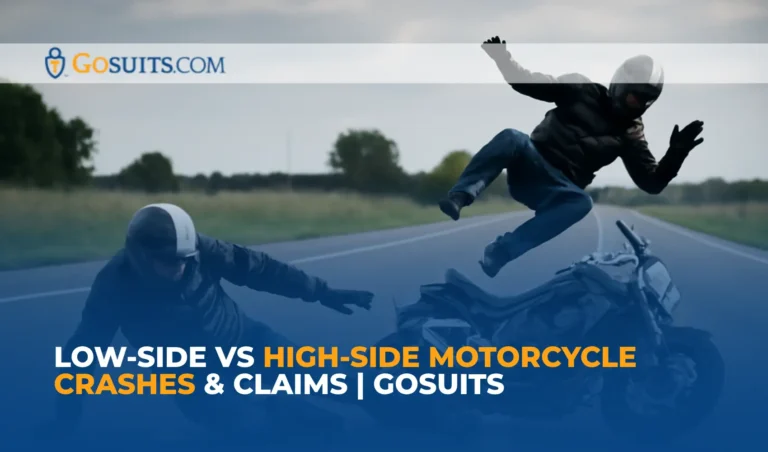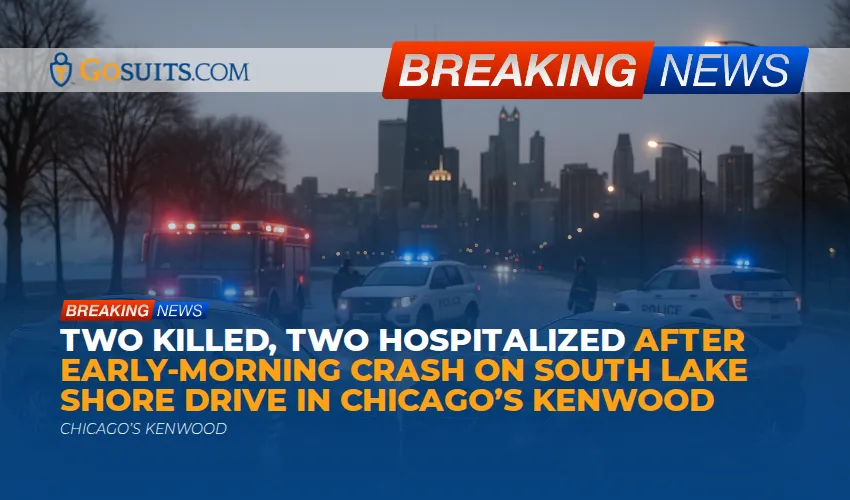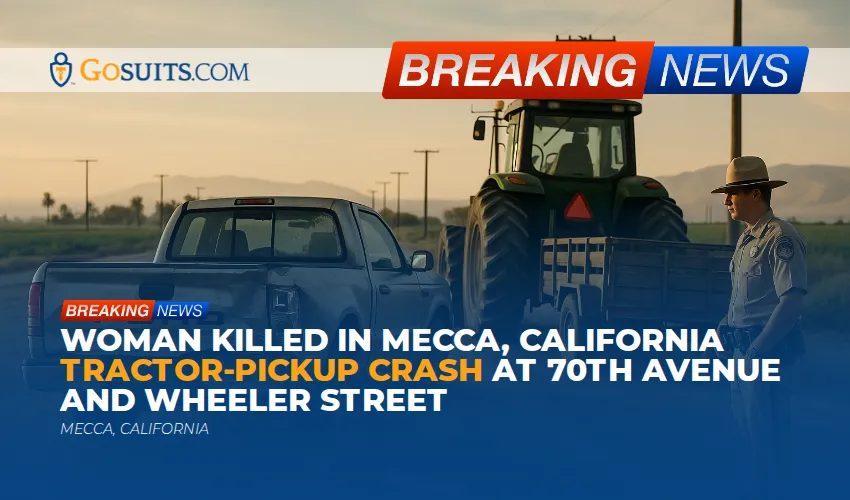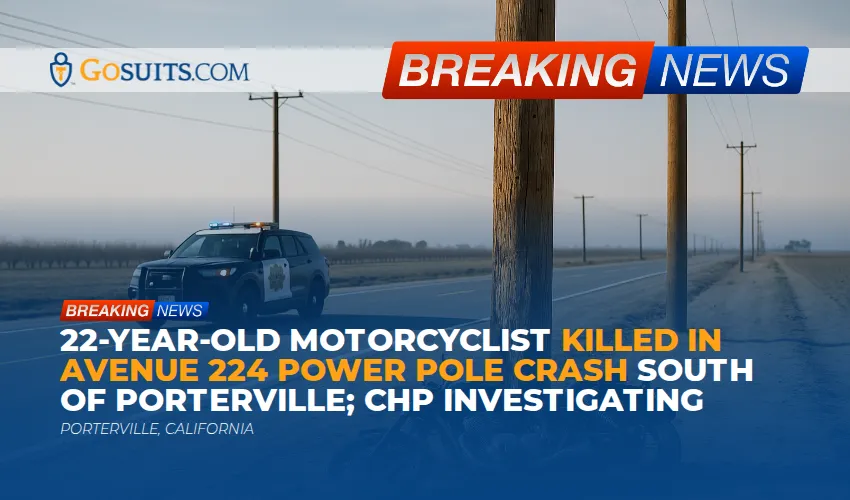- What is the difference between a low-side vs high-side motorcycle crash?
- Why do high-side crashes often lead to more severe injuries than low-side crashes?
- What common causes and road conditions trigger low-side and high-side crashes?
- How do crash mechanics affect liability in motorcycle accident claims?
- How does comparative negligence work in Texas, California, and Illinois?
- What if a road defect or a public entity contributed to the crash?
- What evidence should you preserve after a low-side or high-side crash?
- How do insurance coverage and policy limits impact motorcycle injury compensation?
- What settlement value factors apply in low-side vs high-side motorcycle accident cases?
- What injuries are common and how are damages calculated?
- What are the key deadlines and statutes of limitations in Texas, California, and Illinois?
- How do you work with a crash reconstruction expert and medical professionals?
- What can plaintiffs and defendants expect in the claim process, from investigation through trial?
- How do juries evaluate rider conduct, helmets, and lane splitting in Texas, California, and Illinois?
- When should you contact a motorcycle accident lawyer near me in TX, CA, or IL?
- How does GoSuits help riders and families after a crash?
- What authoritative resources can you consult for more information?
What is the difference between a low-side vs high-side motorcycle crash?
A low-side motorcycle accident typically happens when a tire loses grip and slides out from under the rider. The bike and rider usually fall and slide on the same side the bike leaned toward. The energy of the crash is often dissipated through sliding friction, which can reduce flipping or cartwheeling. By contrast, a high-side motorcycle accident occurs when a sliding rear tire suddenly regains traction while the motorcycle is still out of alignment. That abrupt traction change can snap the bike upright and pitch the rider up and over the bike, often resulting in a violent ejection.
Both crash types can be serious. Low-sides more commonly involve sliding impacts and road rash, while high-sides are associated with hard impact forces to the head, neck, spine, and torso due to ejection and rotation. The mechanics of each event matter in both medical care and the legal analysis of fault, because they can point to causes such as abrupt braking, throttle inputs, surface contaminants, or defects in the roadway.

Why do high-side crashes often lead to more severe injuries than low-side crashes?
High-side crashes launch the rider, which increases vertical and rotational forces compared to a sliding low-side. That added energy increases the risk of traumatic brain injury, spinal injury, chest trauma, and complex fractures. Helmets are critical in either crash type, and the public health data is clear. According to the Centers for Disease Control and Prevention, helmets reduce the risk of head injury by 69 percent and the risk of death by 37 percent for motorcyclists. See CDC Motorcycle Safety resources at cdc.gov.
National crash data also highlight the risks riders face. In 2022, 6,218 motorcyclists were killed in traffic crashes in the United States, the highest in recent years. NHTSA reports that, per vehicle miles traveled, motorcyclists were about 24 times more likely than passenger car occupants to die in a crash and about 4 times more likely to be injured. See NHTSA Traffic Safety Facts for motorcycles at nhtsa.gov. Speeding and impairment are frequent contributors. In recent national summaries, roughly one third of motorcyclists involved in fatal crashes were speeding, and alcohol impairment percentages for riders exceed those for drivers of other vehicle types. See NHTSA Traffic Safety Facts publications under the Motorcycles topic at nhtsa.gov.
What common causes and road conditions trigger low-side and high-side crashes?
Both crash types can result from a mix of rider inputs, surface conditions, vehicle dynamics, and third-party actions. Examples include:
- Sudden braking or throttle changes, specifically mid-corner, which can overload the front or rear tire.
- Surface contaminants like gravel, sand, oil, paint stripes, metal plates, leaves, or water, reduce tire grip.
- Uneven pavement or potholes that interrupt tire contact and traction.
- Vehicle maneuvers by others, such as an unsafe left turn, improper lane change, or abrupt braking ahead.
- Tire, suspension, or brake issues that affect stability, particularly during cornering or emergency maneuvers.
Typically, a low-side happens when the tire loses grip and does not regain it before the slide completes. A high-side often follows a rear tire slide that abruptly hooks back up while the bike is yawed, snapping the chassis and ejecting the rider. Knowing which occurred helps investigators identify whether surface, mechanical, or human factors were central to the crash.
How do crash mechanics affect liability in motorcycle accident claims?
In civil cases, the party seeking compensation must prove duty, breach, causation, and damages. The physics of a low-side vs a high-side can point to different causation theories:
- Third-party driver fault if a vehicle cut off the rider, turned left across the rider, or changed lanes unsafely, contributing to the loss of control.
- Roadway hazard liability if an unreasonable pothole, drop-off, debris, or poorly marked construction zone created a dangerous condition for riders.
- Product defect theories if a tire, brake, throttle, or suspension component failed in a way that caused or enhanced the crash.
- Comparative negligence arguments focused on the rider’s speed, braking, cornering line, visibility, or safety gear, raised by insurers or defendants to reduce damages.
Crash mechanics help allocate fault percentages. For example, a documented oil spill across a corner that produced multiple incidents can shift a significant share of responsibility away from the rider. Conversely, evidence of aggressive speed into a blind curve could increase a rider’s comparative fault. Each state applies its own comparative fault rules, which can change the result.
How does comparative negligence work in Texas, California, and Illinois?
What is the rule in Texas?
Texas uses proportionate responsibility. A claimant cannot recover if their percentage of responsibility is greater than 50 percent. If 50 percent or less, their recovery is reduced by their percentage of fault. See Texas Civil Practice and Remedies Code § 33.001 at statutes.capitol.texas.gov.
What is the rule in California?
California applies pure comparative negligence, which reduces a claimant’s recovery by their percentage of fault, regardless of how high that percentage is. The California Supreme Court adopted this rule in Li v. Yellow Cab Co. of California, 13 Cal.3d 804, and it remains the law. The official opinion is available via the California courts website and archives. See Li v. Yellow Cab at courts.ca.gov.
What is the rule in Illinois?
Illinois applies modified comparative negligence. A claimant is barred from recovery if their contributory fault is more than 50 percent. If 50 percent or less, damages are reduced proportionally. See 735 ILCS 5/2-1116 at ilga.gov.
How do claims work in Texas?
Claims against governmental units in Texas are governed by the Texas Tort Claims Act. There are strict notice requirements, typically within six months, with some cities requiring earlier notice by charter. See Texas Civil Practice and Remedies Code § 101.101 at statutes.capitol.texas.gov. These claims also have liability caps and exceptions, and they involve standards for premises and special defects.
How do claims work in California?
Under California’s Government Claims Act, a written claim for personal injury must be filed with the public entity within six months of the injury. See Government Code § 911.2 at leginfo.legislature.ca.gov. Only after the claim is accepted, rejected, or deemed rejected can a civil lawsuit proceed, and different limitations periods apply. Dangerous condition liability is addressed by Government Code § 835.
How do claims work in Illinois?
Illinois actions against local public entities often have a one-year limitations period under the Local Governmental and Governmental Employees Tort Immunity Act. See 745 ILCS 10/8-101 at ilga.gov. Claims against the State of Illinois may belong in the Court of Claims, which follows different procedures and deadlines. Prompt investigation is critical because notice and proof standards are demanding.
What evidence should you preserve after a low-side or high-side crash?
Early preservation prevents loss of crucial proof. Consider:
- Scene evidence, including photos or video of skid marks, gouges, scrape patterns, fluids, debris, construction zones, and traffic control devices, ideally with scale and multiple angles.
- Motorcycle inspection preserving the bike in its post-crash condition before repairs, documenting tire wear, brake pad and rotor condition, chain tension, fork seals, and aftermarket parts.
- Safety gear including helmet, jacket, pants, gloves, boots. Document scrapes, cracks, liner compression, and blood evidence that can correlate to impact points.
- Digital data such as dashcam footage, smartphone photos and metadata, GPS data, and any available bike ECU data. Federal Rule of Civil Procedure 37(e) addresses sanctions for failure to preserve electronically stored information when litigation is reasonably anticipated. See FRCP 37(e) at law.cornell.edu.
- Witness informatio,n including names, contact details, and statement,s while memories are fresh.
- Medical documentation from the first evaluation forward, including imaging, diagnoses, treatment plans, and work restrictions.

States handle spoliation differently. In California, there is no independent tort for spoliation by parties, but courts can impose discovery sanctions. See Cedars-Sinai Medical Center v. Superior Court, 18 Cal.4th 1, and California Code of Civil Procedure § 2023.030 at leginfo.legislature.ca.gov. In Texas, spoliation is addressed by the trial court through instructions or sanctions when a party breaches its duty to preserve and causes prejudice. See Brookshire Brothers, Ltd. v. Aldridge, 438 S.W.3d 9, opinion available at txcourts.gov. Illinois recognizes negligent spoliation under general negligence principles. See Boyd v. Travelers Ins. Co., 166 Ill. 2d 188, available at scholar.google.com.

How do insurance coverage and policy limits impact motorcycle injury compensation?
Coverage often sets the practical ceiling for settlement unless additional defendants or assets are identified. Points to consider in Texas, California, and Illinois include:
- Liability minimums, which vary by state and can change over time. Check current state sources for minimum auto liability requirements:
- Texas, see the Texas Department of Insurance and statutory minimums, with guidance at tdi.texas.gov.
- California, check financial responsibility requirements at the California DMV at dmv.ca.gov.
- Illinois, see the Illinois Secretary of State insurance requirements at ilsos.gov.
- Uninsured and underinsured motorist coverage, which can help when the at-fault driver has no insurance or insufficient limits. In Texas, insurers must offer UM/UIM coverage, and the policyholder must reject it in writing if they do not want it. See Texas Insurance Code § 1952.101 at statutes.capitol.texas.gov.
- PIP or MedPay, which may provide limited medical and wage benefits depending on state and policy selection.
- Umbrella and commercial policies, which may be implicated if the at-fault driver was working or if a business vehicle is involved.
Disputes can arise over liability, causation, medical necessity, preexisting conditions, and valuation of pain and suffering. In serious high-side crashes with catastrophic injury, stacking coverage and identifying all responsible parties can be decisive for fair compensation.
What settlement value factors apply in low-side vs high-side motorcycle accident cases?
While every case is unique, insurers and juries commonly evaluate:
- Liability clarity, including independent witnesses, traffic camera or dashcam footage, police diagrams, and consistent scene evidence.
- Comparative negligence, such as speed, lane position, visibility clothing, lane splitting legality, and helmet use under the relevant state’s law.
- Injury severity and permanency, for example, traumatic brain injury, spinal injury, complex fractures, and scarring from road rash.
- Medical course, including hospitalizations, surgeries, rehabilitation, future care, and life care planning.
- Earnings impact, covering lost wages, reduced earning capacity, and job retraining needs.
- Venue and jury profile, which can vary between urban and rural counties in Texas, California, and Illinois.
- Insurance and assets, including UM/UIM availability and any corporate or public entity defendants.
- Settlement value factors tied to the mechanics of the crash, for example a high-side ejection often correlates with higher-force impacts and may support higher general damages when supported by medical and biomechanical proof.
What injuries are common, and how are damages calculated?
Common injuries in both low-side and high-side events include road rash, fractures, shoulder and knee ligament injuries, thoracic trauma, spinal injuries, and traumatic brain injury. Helmeted riders face lower risks of head injury and fatality. The CDC reports helmets reduce head injury risk by 69 percent and death risk by 37 percent. See CDC at cdc.gov.
In civil cases, recoverable damages can include medical expenses, lost wages, loss of earning capacity, pain and suffering, disfigurement, and, in wrongful death, losses defined by state law. Calculating damages often involves medical opinions regarding causation and future care, economic assessments of work limitations, and, in severe cases, life care plans supported by treating clinicians and vocational professionals.
What are the key deadlines and statutes of limitations in Texas, California, and Illinois?
- Texas: Most personal injury claims must be filed within two years of the injury. See Texas Civil Practice and Remedies Code § 16.003 at statutes.capitol.texas.gov. Claims involving governmental units have strict notice rules, typically within six months, and shorter periods can apply via local charters. See § 101.101 at statutes.capitol.texas.gov.
- California: Most personal injury claims must be filed within two years. See Code of Civil Procedure § 335.1 at leginfo.legislature.ca.gov. Claims against public entities require a government claim within six months. See Government Code § 911.2 at leginfo.legislature.ca.gov.
- Illinois: Most personal injury actions must be filed within two years. See 735 ILCS 5/13-202 at ilga.gov. Actions against local public entities can have a one-year limitations period under 745 ILCS 10/8-101 at ilga.gov.
Deadlines are unforgiving. If a crash occurred in Houston, Dallas, Austin, San Antonio, Los Angeles, San Diego, San Francisco, Chicago, Naperville, or Springfield, act quickly to identify all applicable time limits and notice requirements in that jurisdiction.
How do you work with a crash reconstruction expert and medical professionals?
In serious low-side and high-side cases, qualified reconstruction professionals analyze vehicle dynamics, time distance, point of rest, slide marks, yaw marks, impact damage, and visibility. In litigation, these individuals are often called a “crash reconstruction expert” in pleadings and court schedules. They may:
- Map the scene using total stations, drones, and photogrammetry to build accurate 2D or 3D models.
- Analyze vehicle evidence, including scrape angles, crush, handlebar and peg deformation, chain marks, and helmet contact points.
- Calculate speed and angles based on friction coefficients, slide distances, and throw distances where applicable.
- Correlatethe testimony of drivers and witnesses with physical evidence to test consistency.
Medical professionals document injuries, causation, prognosis, and future care needs. This combination of technical and medical analysis strengthens proof for either side and helps value claims appropriately.
How does the claim usually begin?
Most cases start with notice to insurers and an investigation. Insurers often take recorded statements early. Riders should be careful with what they say and avoid speculation. Insurers evaluate liability and damages, then make a decision to accept, deny, or dispute the claim.
What happens if the case does not settle?
If the claim does not resolve, a lawsuit is filed within the limitations period. The defendant answers, and the case moves into discovery. Parties exchange documents, written questions, and depositions. Courts may order mediation. If the case proceeds to trial, a jury or judge decides fault percentages and damages. For a federal civil case overview of pleadings, discovery, and trial, see the U.S. Courts overview at uscourts.gov.
What strategies are common for plaintiffs and defendants?
- Plaintiffs focus on preserving evidence, establishing third-party fault through scene and vehicle analysis, documenting medical causation, and demonstrating losses with records and testimony.
- Defendants may argue comparative negligence, challenge causation, dispute medical necessity, and scrutinize damages, sometimes presenting alternative reconstructions.
Given the complexity of reconstruction, biomechanics, and insurance, legal help is important to navigate investigation, deadlines, and expert-driven issues in both low-side and high-side cases.
How do helmet laws affect liability arguments?
- Texas: Helmets are required for riders under 21. Riders 21 and older may ride without a helmet if they meet statutory training and insurance conditions. See Texas Transportation Code § 661.003 at statutes.capitol.texas.gov. In civil cases, defendants may argue nonuse of a helmet increased injury severity. The legal effect can vary based on evidence and court rulings.
- California: Universal helmet law requires all riders and passengers to wear a helmet. See Vehicle Code § 27803 at leginfo.legislature.ca.gov. Alleged helmet violations can factor into comparative fault if linked to injury prevention, subject to proof.
- Illinois: Illinois does not mandate helmets for adults, although helmeted riding is strongly recommended in state materials. See the Illinois Secretary of State Motorcycle Operator Manual at ilsos.gov.
How does lane splitting factor in?
- California: Lane splitting is defined by statute and is permitted. The California Highway Patrol offers safety information. See Vehicle Code § 21658.1 at leginfo.legislature.ca.gov, and CHP guidance at chp.ca.gov. In court, the question becomes whether the rider was operating reasonably under the circumstances, not whether lane splitting itself was unlawful.
- Texas: Lane splitting is not authorized by statute, and riders can be cited under general lane usage rules. See Transportation Code § 545.060 at statutes.capitol.texas.gov. A jury may consider lane-sharing conduct under comparative fault principles.
- Illinois: Operating a motorcycle between lanes or rows of vehicles is prohibited. See 625 ILCS 5/11-703(e) at ilga.gov. Violations can support comparative negligence arguments if connected to the crash.

When should you contact a motorcycle accident lawyer near me in TX, CA, or IL?
If you or a loved one experienced a low-side or high-side motorcycle accident in Texas, California, or Illinois, timely legal help is important. Investigations move fast, roadway conditions change, and video can be overwritten. A lawyer can coordinate evidence preservation, timeline reconstruction, identification of all liable parties, and insurance coverage analysis, including UM or UIM. Speaking with counsel early helps you avoid missed deadlines and protects your rights, whether the crash happened in Houston, Dallas, Austin, San Antonio, Los Angeles, San Diego, San Francisco, Chicago, Naperville, or Springfield.
How does GoSuits help riders and families after a crash?
Your questions about low-side vs high-side motorcycle crashes and claims align with our personal injury practice across Texas, California, and Illinois. A free consultation with a motorcycle accident lawyer can clarify your options, outline next steps, and help you avoid early claim mistakes. We handle civil injury cases only, including collisions involving cars, trucks, rideshare vehicles, commercial fleets, and dangerous road conditions.
- Where we practice: Statewide in Texas, California, and Illinois, including Houston, Dallas, Austin, San Antonio, Los Angeles, San Diego, San Francisco, Chicago, Naperville, and Springfield.
- Technology-driven: We pair litigation experience with proprietary software that streamlines intake, records collection, liability analysis, and damages modeling, moving cases faster without sacrificing quality.
- Exclusive proprietary platform: Our in-house system integrates medical chronology, policy tracking, and negotiation analytics to present clear, data backed demands and prepare for trial efficiently.
- Leadership in innovation: We apply modern data workflows, structured evidence management, and visual demonstratives to make complex crash mechanics understandable for adjusters, mediators, and juries.
- Attorney access: While we leverage technology to expedite each matter, every client works directly with a designated attorney, not a case manager, with open access for updates and strategy.
- Past results: Our team has recovered significant outcomes for clients in traffic and roadway cases. You can review a sample of prior matters at gosuits.com/prior-cases.
- Practice areas and experience: We handle motorcycle, auto, trucking, pedestrian, bicycle, premises, product, and wrongful death cases, with 30 years of combined experience. That includes extensive motion practice, discovery, and trial work.
- Trial readiness: Building cases for trial tends to improve negotiation posture. Our approach develops liability and damages with the same rigor whether a case settles or goes before a jury.
Every case is different. We welcome a conversation about your specific situation and how the mechanics of a low-side or high-side crash may affect liability, injuries, and recovery.
What authoritative resources can you consult for more information?
- NHTSA Motorcycle Traffic Safety statistics and research
- CDC Motorcycle Safety helmet effectiveness and state laws overview
- U.S. Courts civil case process basics
- Federal Rule of Civil Procedure 37(e) electronically stored information and spoliation
- Brookshire Brothers, Ltd. v. Aldridge Texas spoliation framework
- Boyd v. Travelers Ins. Co. Illinois negligent spoliation
- Li v. Yellow Cab Co. California pure comparative fault
- California CCP § 335.1 personal injury two year statute
- Texas CPRC § 16.003 personal injury two year statute
- 735 ILCS 5/13-202 personal injury two year statute
- Texas CPRC § 33.001 proportionate responsibility
- 735 ILCS 5/2-1116 modified comparative negligence
- California Vehicle Code § 27803 helmet requirement
- Texas Transportation Code § 661.003 helmet requirements
- Illinois Motorcycle Operator Manual safety guidance
- California Government Code § 911.2 government claim deadline
- Texas CPRC § 101.101 governmental notice
- 745 ILCS 10/8-101 actions against local public entities
- California Vehicle Code § 21658.1 lane splitting definition
- California Highway Patrol Lane Splitting safety information
- Texas Transportation Code § 545.060 lane usage
- 625 ILCS 5/11-703 lane use and lane splitting prohibition
- Texas Insurance Code § 1952.101 UM and UIM offer requirement






